Submitted by chandra on Fri, 2014-05-30 09:13
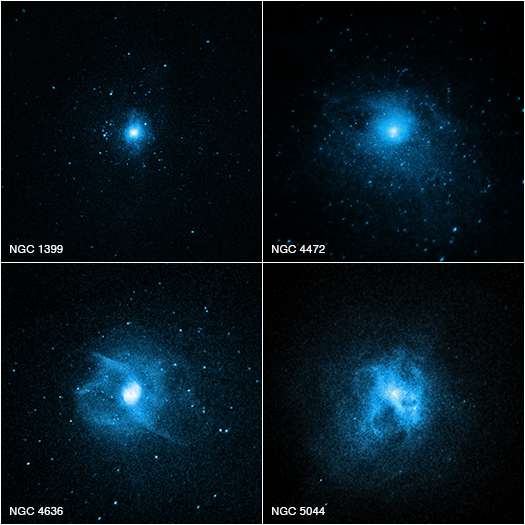
NASA's Chandra X-ray Observatory has shed new light on the mystery of why giant elliptical galaxies have few, if any, young stars. This new evidence highlights the important role that supermassive black holes play in the evolution of their host galaxies.
Because star-forming activity in many giant elliptical galaxies has shut down to very low levels, these galaxies mostly house long-lived stars with low masses and red optical colors. Astronomers have therefore called these galaxies "red and dead".
Submitted by chandra on Wed, 2014-04-23 08:40
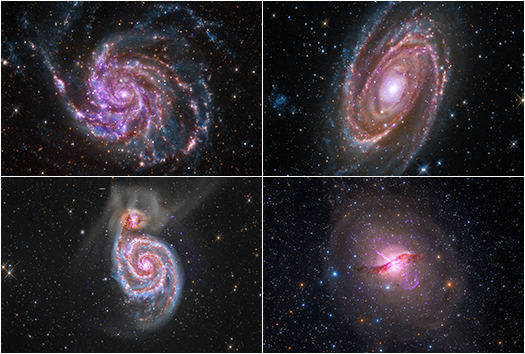
We are perhaps living in the midst of a new "Golden Age" of astronomy. In the four hundred years since Galileo first trained his refracting optical telescope on the Moon, and Jupiter and its moons, we've seen staggering advances in the technology of telescopes. We've also benefited from the discoveries of light beyond the visible portions of the electromagnetic spectrum and the development of instruments sensitive to those wavelengths.
Submitted by chandra on Tue, 2013-09-24 10:41
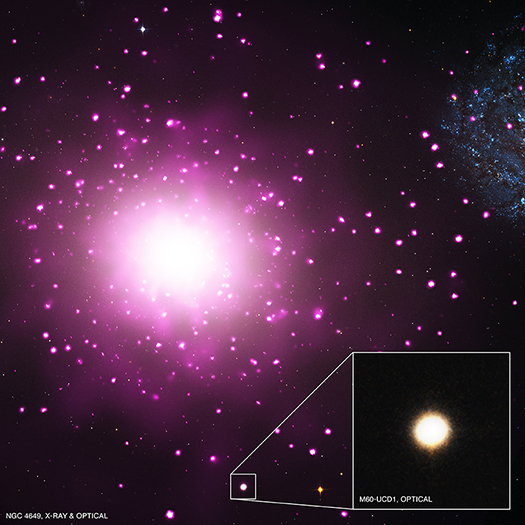
The densest galaxy in the nearby Universe may have been found, as described in our latest press release. The galaxy, known as M60-UCD1, is located near a massive elliptical galaxy NGC 4649, also called M60, about 54 million light years from Earth.
Submitted by chandra on Tue, 2013-09-24 10:38
We are very pleased to welcome Jay Strader as a guest blogger today. Jay is the first author of a paper describing evidence for the densest known galaxy in the nearby universe, the subject of our latest press release. He is an assistant professor in the Department of Physics and Astronomy at Michigan State University. From 2007-2012 he was a Hubble Fellow and Menzel Fellow at the Harvard-Smithsonian Center for Astrophysics. He earned his BS in Physics and Mathematics at Duke University, and his PhD at the University of California-Santa Cruz. As his Twitter biography says (@caprastro), he loves "goats, birds, the Celtics, and globular clusters".
Explaining the basic properties of galaxies from spirals like our own Milky Way to dwarf galaxies like the Magellanic Clouds has been one of the central occupations of astronomers over the last few decades. Most astronomers now favor a picture in which galaxies form at the center of condensed "halos" of mysterious dark matter. Gas flows into these halos, cools, and forms stars and planets. The most massive galaxies are built up by mergers of smaller galaxies, which can shut off new star formation and leave behind "dead" elliptical galaxies. This basic scenario is a framework through which we can understand the formation of the known types of galaxies.
Submitted by chandra on Wed, 2013-08-14 10:36
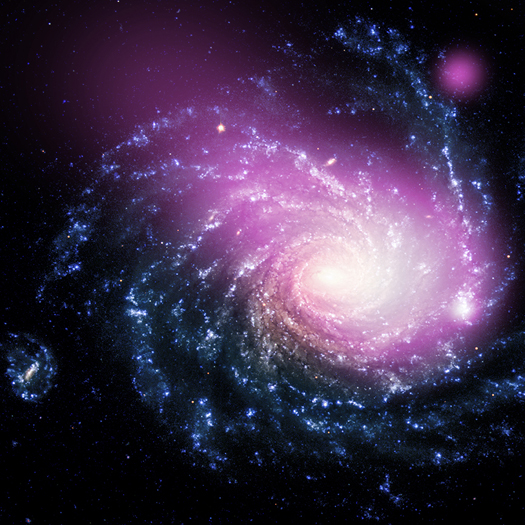
Observations with NASA's Chandra X-ray Observatory have revealed a massive cloud of multimillion-degree gas in a galaxy about 60 million light years from Earth. The hot gas cloud is likely caused by a collision between a dwarf galaxy and a much larger galaxy called NGC 1232. If confirmed, this discovery would mark the first time such a collision has been detected only in X-rays, and could have implications for understanding how galaxies grow through similar collisions.
Submitted by chandra on Wed, 2013-06-12 10:45
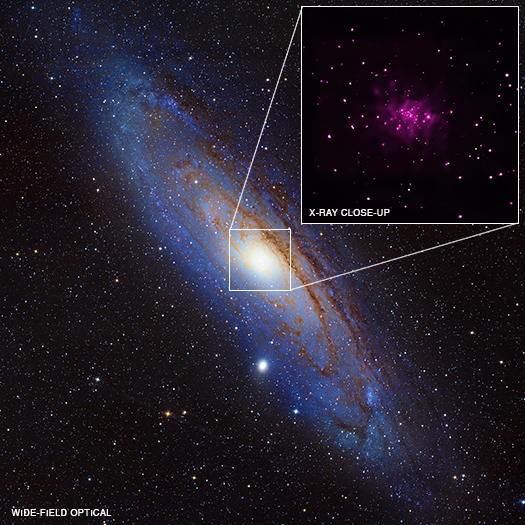
Data from NASA's Chandra X-ray Observatory have been used to discover 26 black hole candidates in the Milky Way's galactic neighbor, Andromeda, as described in our latest press release. This is the largest number of possible black holes found in a galaxy outside of our own.
Submitted by chandra on Wed, 2013-06-12 10:41
We are delighted to welcome Robin Barnard as a guest blogger today. Robin is currently a research fellow at the Harvard-Smithsonian Center for Astrophysics; originally from the UK, he has greatly enjoyed living in the US for 3 years. He got his PhD at the University of Birmingham, and a MPhys (Hons) in Physics with Astrophysics from the University of Manchester; thanks to a quirky convention, he has considerably more letters after his name than in it! He was previously employed as a research fellow at the Open University.
I came to the USA to hunt black holes. Not nearby ones (that might be a bit scary), but ones in the nearby spiral galaxy known as the Andromeda Galaxy, or M31. As Grant & Naylor pointed out in the BBC TV series Red Dwarf: the thing about black holes, their main defining feature, is that they’re black; and the thing about space, the basic space color, is it’s black. This makes lone black holes very hard to see! However, black holes that are able to snatch material from an orbiting companion star can release huge amounts of energy, mostly as X-ray radiation. Such systems are called X-ray binaries (XBs), and neutron star plus normal star XBs are also possible (and indeed are more common). In our Galaxy, black hole binary systems with low-mass companions go unnoticed for long periods of time, occasionally exhibiting huge outbursts in X-rays; for this reason, they are known as X-ray transients. The similarity between known black hole X-ray transients and other low-mass X-ray transients suggests that most low-mass X-ray transients contain black holes.
Submitted by chandra on Tue, 2013-04-30 10:16
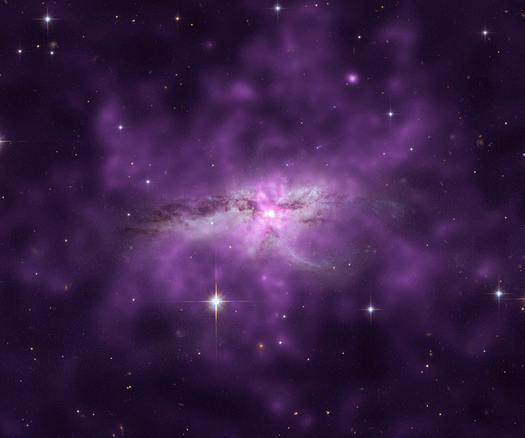
Scientists have used Chandra to make a detailed study of an enormous cloud of hot gas enveloping two large, colliding galaxies. This unusually large reservoir of gas contains as much mass as 10 billion Suns, spans about 300,000 light years, and radiates at a temperature of more than 7 million degrees.
Submitted by chandra on Thu, 2012-12-13 10:39
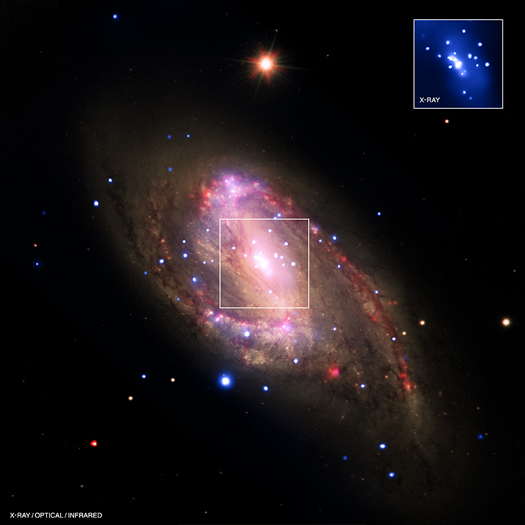
The spiral galaxy NGC 3627 is located about 30 million light years from Earth. This composite image includes X-ray data from NASA's Chandra X-ray Observatory (blue), infrared data from the Spitzer Space Telescope (red), and optical data from the Hubble Space Telescope and the Very Large Telescope (yellow). The inset shows the central region, which contains a bright X-ray source that is likely powered by material falling onto a supermassive black hole.
Submitted by chandra on Thu, 2012-12-06 09:29
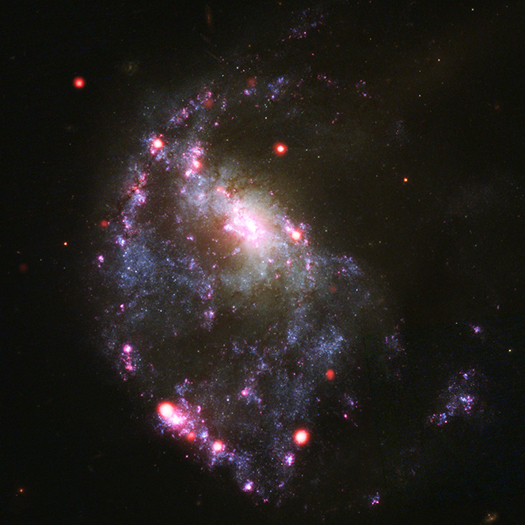
In this holiday season of home cooking and carefully-honed recipes, some astronomers are asking: what is the best mix of ingredients for stars to make the largest number of plump black holes?
They are tackling this problem by studying the number of black holes in galaxies with different compositions. One of these galaxies, the ring galaxy NGC 922, is seen in this composite image containing X-rays from NASA's Chandra X-ray Observatory (red) and optical data from the Hubble Space Telescope (appearing as pink, yellow and blue).
Pages